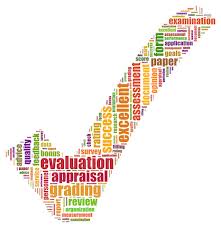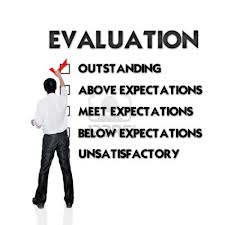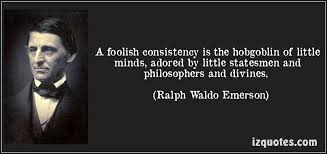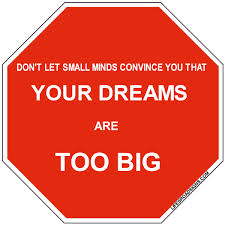As I explained at the beginning of this series of posts, one of the most often clicked blog posts in 2015 is something I wrote at the end of 2014 titled “Time to start writing your 2015 resource development plan“. With this in mind, I decided to take a deeper dive on this subject by writing a series of posts on how to go about writing your organization’s annual resource development plan.
The first post in this series was titled “Writing your resource development plan in steps: Step One,” and it focused exclusively on the importance of putting the right people at the table. Today’s post is all about the next step, which of course is about evaluation and assessment. Enjoy!
 Now that you have all of the right people sitting around the table, the next thing you want to do is engage the group in assessment activities.
Now that you have all of the right people sitting around the table, the next thing you want to do is engage the group in assessment activities.
Why assessment? Here are just a few good reasons:
- You can’t decided where you’re going unless you know where you’re at
- Your volunteers need to get a pulse on the your resource development program (think of it as orientation)
- Identifying gaps and inefficiencies makes direction setting easier
As I mentioned in the first post of this series, my former employer — Boys & Girls Clubs of America — had developed an online software wizard (which has since been shutdown) to assist its local affiliates with writing an annual written resource development plan. This software was workbook driven and designed to help staff facilitate committee discussions and develop content to enter into the software. As you can imagine, the first two workbooks both dealt with assessment.
Workbook #1 contained 23 statements that describe various activities necessary to operate an effective resource development program. Each statement was accompanied by measurable standards, which were designed to help volunteers determine the best response rating for each quality statement. It would take too much space to copy/paste the entire workbook into this blog post; however, I will share the 23 quality statements. Hopefully, this will get you pointed in the right direction with regards to developing a self assessment tool that works for your organization and group of volunteers.
 Resource Development Quality statements
Resource Development Quality statements
- Our funding is diversified and we are not overly dependent on one source of revenue.
- Our board has approved a written multi-year strategic plan for our organization
- We are ensuring our organization’s sustainability through a current and active planned giving program
- We conduct well-planned special events that maximize return on investment.
- Our board members annually donate unrestricted philanthropic gifts to the organization.
- Our board members are involved in face-to-face solicitations.
- Our board members are engaged in stewardship activities for the organization.
- Our board members understand their resource development roles and responsibilities
- The leadership for each fundraising activity (i.e., annual campaign, special event, etc.) is carefully considered to ensure the right person is selected.
- We have adequate staff to support all of our resource development efforts.
- We effectively plan for and utilize volunteers in various components of our resource development plan.
- We use the most cost-effective and efficient methods to raise money for the organization.
- We have a Resource Development Committee that coordinates a written resource development plan that is consistent with the organization’s written strategic plan.
- We have a compelling case statement that demonstrates the needs of clients in our community and inspires charitable giving to the organization.
- We have a donor database that easily generates reports and enables us to effectively manage donor relations.
- We have procedures (a management system) to ensure that the organization uses donations as intended by the donor.
- We have an ongoing, written plan to recognize donors and engage them in organizational activities.
- In order to preserve and enhance confidence in the organization, we provide constituencies with reports regarding the sources, uses and management of donated funds (provide stewardship).
- We have written gift acceptance policies and procedures to acknowledge gifts in a timely manner based on the source of gift.
- Our CEO and board members serve on various community boards and civic organizations to influence decisions, create awareness and advocate for the organization and issues associated with our mission.
- We have an up-to-date written marketing plan that clearly identifies our key message and targeted audiences.
- We have an adequate system for providing reports to the Resource Development Committee and the board so that they can monitor progress of the resource development plan.
- We regularly review our funding and donor trends.
 Other Questions Your Volunteers Will Want Answers To
Other Questions Your Volunteers Will Want Answers To
After developing an assessment tool that addresses some or all of the aforementioned 23 quality statements, you will want to pull together data for your committee to digest. The following are just a few questions your volunteers will want to see answers to (as you have probably guessed, these questions all came from workbook two of BGCA’s software tool):
- Is there an increase in total funding from year to year? Why?
- Which funding stream is a strength for your organization? Why?
- Which funding stream is a weakness for your organization? Why?
- Which funding stream has the greatest opportunity for growth in the next 1, 2 or 3 years?
- Does your 3-year trend for revenue streams from individuals show an increase, decline or consistent level of funding? What is the reason for the change or lack of change in this funding source?
- Do you have a strong base of donors who give to your annual campaign?
- Do you have an endowment program? If not, what steps would need to be taken to establish an endowment program? If so, then what steps need to be taken to actively recruit funds for your endowment?
- Does your 3-year trend for revenue streams from corporate giving show an increase, decline or consistent level of funding? What is the reason for the change or lack of change in this funding source?
- Does your 3-year trend for special events show an increase, decline or consistent level of funding? What is the reason for the change or lack of change in this funding source?
- Do you collect contact information from everyone who participates in a special event? Why or why not?
- Do you have a plan to cultivate special event attendees? Why or why not?
- Can you reduce the number of special events you conduct and increase revenue in another funding stream that has a higher return on investment? What steps would your organization need to take in order to make this change?
- Does your 3-year trend for private grants and foundations show an increase, decline or consistent level of funding? What is the reason for the change or lack of change in this funding source?
- Are you receiving government funding at the city, state and federal level? If not, what strategies can you implement to gain funding?
As you can imagine, this is a lot of work. It is the staff’s job to develop the assessment tool and pull together the data to help volunteers answer these questions. It is your volunteers’ job to talk it through and do the actual assessment while sitting around the committee room table.
Cutting this corner means you will be putting your annual written resource development plan together in the dark. Remember, the old planning expression: “If you don’t know where you’re going, any road will get you there.” In other words, assessment activities and discussions are akin to developing the map you need in order to have fruitful planning discussions down the road (e.g. visioning, goal setting, strategy development, action plan writing, etc).
A special thanks to BGCA’s Paula Mackelburg who did much of the heavy lifting on creating this awesome (albeit now defunct) planning tool. Her wisdom and vision in this area is amazing.
Next week, we will continue this discussion and talk about visioning and goal setting. Stay tuned.
Here’s to your health!
Erik Anderson
Founder & President, The Healthy Non-Profit LLC
www.thehealthynonprofit.com
erik@thehealthynonprofit.com
http://twitter.com/#!/eanderson847
http://www.facebook.com/eanderson847
http://www.linkedin.com/in/erikanderson847

 Welcome to O.D. Fridays at DonorDreams blog. Every Friday for the foreseeable future we will be looking at posts from John Greco’s blog called “
Welcome to O.D. Fridays at DonorDreams blog. Every Friday for the foreseeable future we will be looking at posts from John Greco’s blog called “ Well, huh? Let me see here. Every good planning process begins with an assessment /evaluation which springboards off into goal setting, strategy development and action planning. If the organization I just referenced hadn’t been so “foolishly consistent,” they would’ve seen the following:
Well, huh? Let me see here. Every good planning process begins with an assessment /evaluation which springboards off into goal setting, strategy development and action planning. If the organization I just referenced hadn’t been so “foolishly consistent,” they would’ve seen the following: The board members and executive director of the agency I reference in the example above certainly were “little“. I say this because their “foolish consistency” and unwillingness to do any assessment and planning had locked them into being a certain size. When you looked at their agency budget, they had brought in the same amount of revenue for the last 10 years.
The board members and executive director of the agency I reference in the example above certainly were “little“. I say this because their “foolish consistency” and unwillingness to do any assessment and planning had locked them into being a certain size. When you looked at their agency budget, they had brought in the same amount of revenue for the last 10 years.